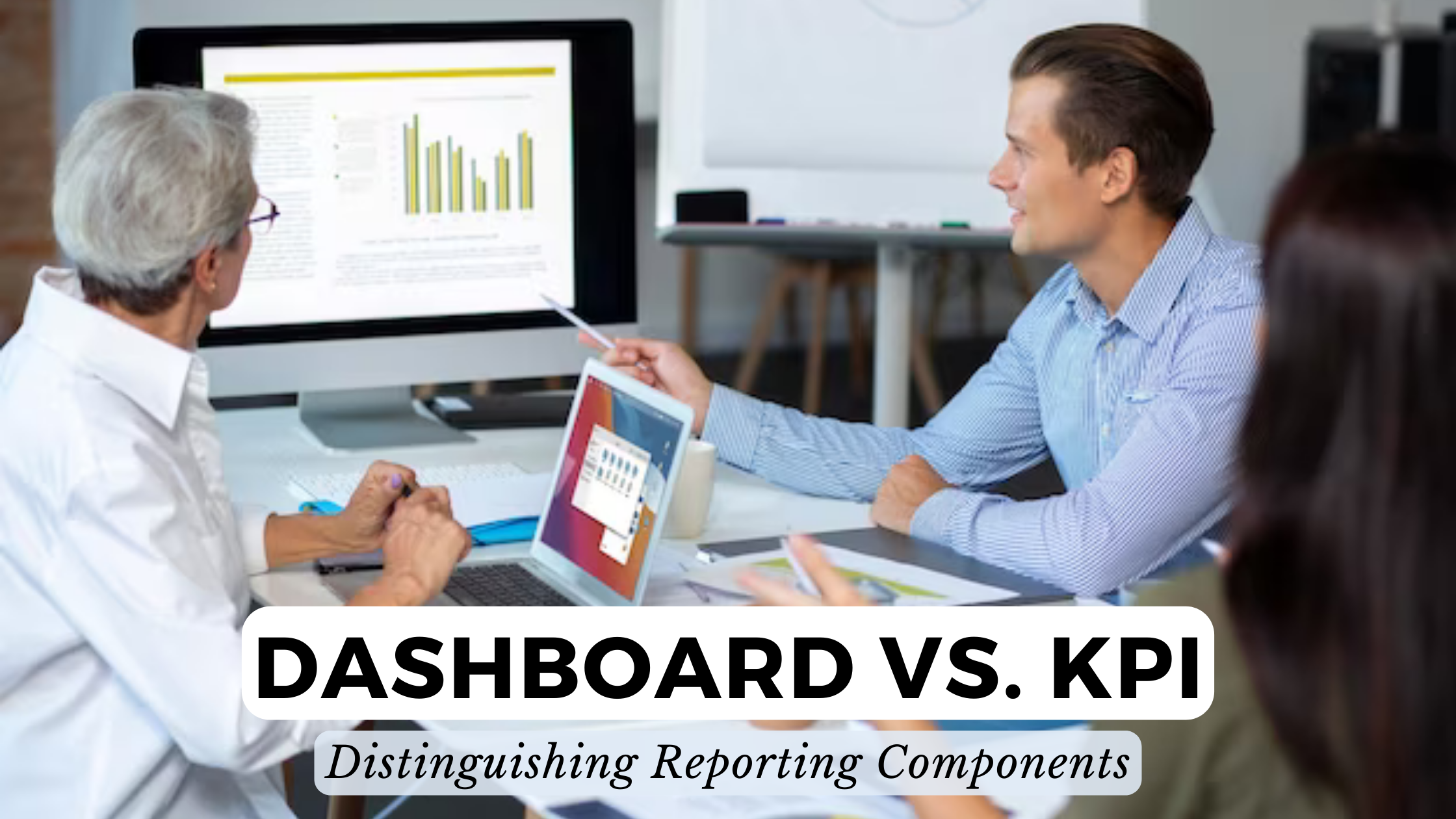Dashboard vs. KPI: Distinguishing Reporting Components
-


Dashboard vs. KPI: Distinguishing Reporting Components
In the dynamic realm of data-driven decision-making, dashboards and Key Performance Indicators (KPIs) play pivotal roles. Understanding the nuances between these reporting components is crucial for businesses aiming to extract actionable insights from their data. In this exploration, we’ll dissect the differences between a dashboard and a KPI, shedding light on their distinctive functions and significance.
Unveiling the Reporting Landscape
Dashboard Defined
A dashboard is a visual representation of data that provides an at-a-glance view of key metrics and performance indicators relevant to a specific business process or objective. Dashboards amalgamate diverse data sources into a unified display, offering a comprehensive overview. They serve as a control center for monitoring, analyzing, and managing the health of an organization.
Deciphering Key Performance Indicators (KPIs)
KPIs are quantifiable metrics that gauge the performance of an organization or a specific aspect of its operations. Unlike dashboards, which present a broader spectrum of data, KPIs are specific, measurable values that align with strategic goals. KPIs act as benchmarks, helping organizations track progress toward objectives and make informed decisions.
Choosing the Right Tools: SaaS Solutions
In the pursuit of effective data reporting, several SaaS products stand out. Let’s explore a curated selection that caters to both dashboard creation and KPI tracking:
1. Tableau
Tableau is a robust data visualization tool that empowers users to create interactive and shareable dashboards. Its drag-and-drop interface makes it accessible for individuals across an organization to transform raw data into actionable insights.
2. Google Data Studio
For organizations invested in the Google ecosystem, Google Data Studio offers a seamless solution for building interactive dashboards. The platform integrates with various data sources, providing real-time collaboration and reporting capabilities.
3. Domo
Domo is an end-to-end business intelligence platform that goes beyond dashboards. It incorporates KPI tracking, allowing users to set, monitor, and analyze key performance indicators alongside comprehensive data visualizations.
4. Klipfolio
Klipfolio specializes in KPI dashboards, offering a range of pre-built templates and integrations. It enables organizations to track performance against predefined KPIs and customize dashboards to align with specific business objectives.
Conclusion: Striking a Balance
In essence, a harmonious blend of dashboards and KPIs is essential for holistic data reporting. Dashboards provide the overarching view, while KPIs offer granular insights into specific metrics critical for organizational success. Integrating both ensures a well-rounded approach to monitoring and optimizing performance.
Subscribed.FYI: Navigating Your SaaS Stack
Navigating the vast landscape of SaaS tools can be overwhelming. Subscribed.FYI emerges as the solution, simplifying the management of your SaaS subscriptions. By centralizing information about various tools, Subscribed.FYI empowers users to make informed decisions and optimize their SaaS stack effortlessly.
Unlock exclusive deals on essential SaaS tools by joining Subscribed.FYI Deals. Sign up today to access savings on 100+ SaaS tools, providing you the leverage to enhance your reporting capabilities and achieve data-driven excellence.
Relevant Links:





